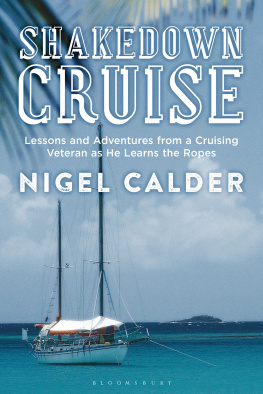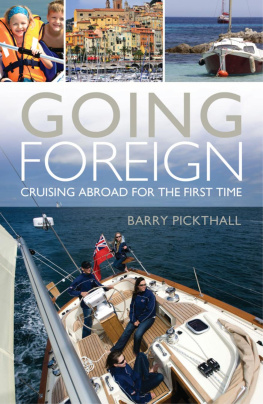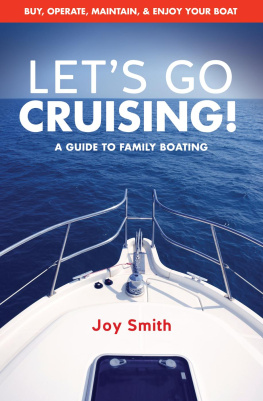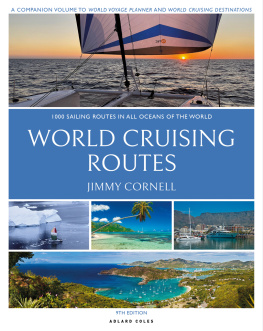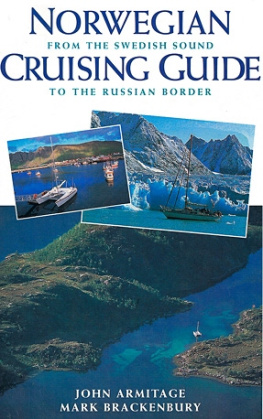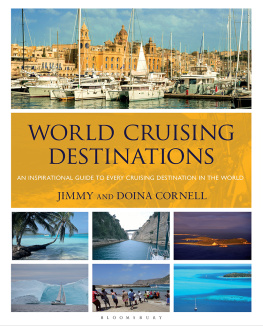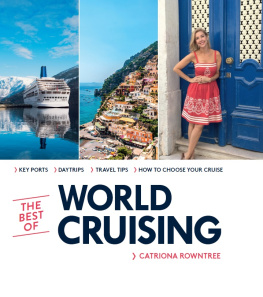He who goes to sea for pleasure would go to hell to pass the time!
ANONYMOUS


Copyright 2001 by Nigel Calder. All rights reserved. Except as permitted under the United States Copyright Act of 1976, no part of this publication may be reproduced or distributed in any form or by any means, or stored in a data base or retrieval system, without the prior written permission of the publisher.
ISBN: 978-0-07-179735-1
MHID: 0-07-179735-1
The material in this eBook also appears in the print version of this title: ISBN: 978-0-07-135099-0, MHID: 0-07-135099-3.
All trademarks are trademarks of their respective owners. Rather than put a trademark symbol after every occurrence of a trademarked name, we use names in an editorial fashion only, and to the benefit of the trademark owner, with no intention of infringement of the trademark. Where such designations appear in this book, they have been printed with initial caps.
McGraw-Hill eBooks are available at special quantity discounts to use as premiums and sales promotions, or for use in corporate training programs. To contact a representative please e-mail us at bulksales@mcgraw-hill.com.
TERMS OF USE
This is a copyrighted work and The McGraw-Hill Companies, Inc. (McGraw-Hill) and its licensors reserve all rights in and to the work. Use of this work is subject to these terms. Except as permitted under the Copyright Act of 1976 and the right to store and retrieve one copy of the work, you may not decompile, disassemble, reverse engineer, reproduce, modify, create derivative works based upon, transmit, distribute, disseminate, sell, publish or sublicense the work or any part of it without McGraw-Hills prior consent. You may use the work for your own noncommercial and personal use; any other use of the work is strictly prohibited. Your right to use the work may be terminated if you fail to comply with these terms.
THE WORK IS PROVIDED AS IS. McGRAW-HILL AND ITS LICENSORS MAKE NO GUARANTEES OR WARRANTIES AS TO THE ACCURACY, ADEQUACY OR COMPLETENESS OF OR RESULTS TO BE OBTAINED FROM USING THE WORK, INCLUDING ANY INFORMATION THAT CAN BE ACCESSED THROUGH THE WORK VIA HYPERLINK OR OTHERWISE, AND EXPRESSLY DISCLAIM ANY WARRANTY, EXPRESS OR IMPLIED, INCLUDING BUT NOT LIMITED TO IMPLIED WARRANTIES OF MERCHANTABILITY OR FITNESS FOR A PARTICULAR PURPOSE. McGraw-Hill and its licensors do not warrant or guarantee that the functions contained in the work will meet your requirements or that its operation will be uninterrupted or error free. Neither McGraw-Hill nor its licensors shall be liable to you or anyone else for any inaccuracy, error or omission, regardless of cause, in the work or for any damages resulting therefrom. McGraw-Hill has no responsibility for the content of any information accessed through the work. Under no circumstances shall McGraw-Hill and/or its licensors be liable for any indirect, incidental, special, punitive, consequential or similar damages that result from the use of or inability to use the work, even if any of them has been advised of the possibility of such damages. This limitation of liability shall apply to any claim or cause whatsoever whether such claim or cause arises in contract, tort or otherwise.
To Terrie, who humors my addiction to sailboats
in spite of the fact that she would rather explore the world
from behind the wheel of a minibus.
CONTENTS
PREFACE
In 1971, as a footloose English hippie, I met a wild nineteen-year-old American. Keen to impress her, I suggested we borrow my brothers 28-foot sailboat, fittingly named Wallop , and spend a week exploring Englands east coast. Terrie took a look at a small-scale chart of the region, which included most of the North Sea and its European coastline, and said, Why dont we go to Amsterdam?
Well, OK, I answered, a little hesitantly, concealing the fact that while I had done a fair amount of dinghy sailing, I had virtually no offshore experience and almost no navigational skills.
Lets go.
We rounded up a crew of landlubbers, filled the bilges with bottles of homemade beer, drank a few toasts, and headed out the Crouch estuary. The first North Sea swells found me hunched over the chart table, poring over the piloting chapters in a well-thumbed copy of Eric Hiscocks Cruising under Sail , alternately reading and retching.
Hiscock got us to Amsterdam, at which point Terrie said she needed to go ashore to make a phone call. Fifteen minutes later, a Dutch boyfriend showed up on the dock and she was gone! There was nothing in Hiscock to help me deal with that crisis. Fortunately, it was soon resolved: Terrie was back the next day (the Dutch guy had a full-time job, which made life rather boring), and we have been cruising together ever since.
Hiscocks book and its companion piece, Voyaging under Sail (combined into a single volume in 1980), were seminal works not just for us, but also for generations of cruising sailors. In fact, his books have been popular enough to spawn an entire genre. This book of mine is just the latest entry in the field. So you might well ask, Why another one?
The answer is that, although many of the skills required to sail a boat are the same today as they were fifty years ago when Hiscock first started writing, the boats in which todays sailing is done are a far cry from those of Hiscocks day, as indeed is the equipment used to sail, pilot, and navigate them. It is this, I feel, that makes another stab at the subject worthwhile.
As irresponsible as it was, Terrie, I, and our landlubberly crew could set off with nothing more than a basic understanding of how to sail a boat, and still successfully cruise around northern Europe (we did, however, get run down by a freighter on the way home, but thats another story ...). We simply could not have done it in most modern boats.
So my hope is that I can demystify the desirable attributes of modern cruising boats, walk the reader through modern cruising systems and equipment, and summarize those skills that we have found necessary or useful to happily cruise for the past thirty years.
My qualifications for writing such a book include decades of experience with the technical side of cruising, an appreciation of the benefits of the best of modern technology, and years of family cruising. Even so, despite the fact that Terrie and I have many miles of blue-water passagemaking behind us, I need to acknowledge that we are no great sailors. Terrie gets very seasick, and I chum the water from time to time. In common with most of the people who read this book, we have never crossed an oceanand maybe never will. The longest open-water passage we have made is 600 milesacross the Gulf of Mexicoalthough we have now done this eighteen times, often in midwinter in unpleasant conditions. As cruisers, we are fairly typical of mainstream or wanna-be cruisersI believe I am coming from the same place most of my readers would like to be!
In writing this book, I have tried to be as objective as I know how but, inevitably, this is a more subjective book than Boatowners Mechanical and Electrical Manual and my other technical books. When it comes to stripping down a winch or overhauling a toilet, there is essentially a right way and the wrong ways. However, when it comes to determining a suitable keel configuration for a cruising boat, there is a range of choices, all of which may be right in different circumstances.
Next page

